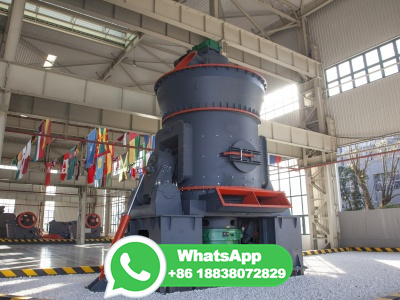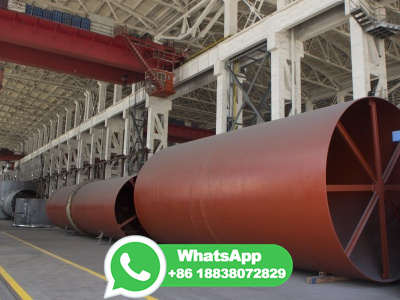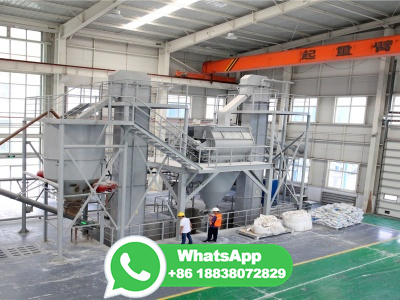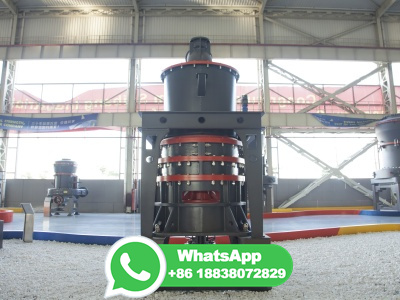
This study adopted the RosinRammlerBennett (RRB) equation to model the particle size distribution (PSD) of ground granulated blast furnace slag (GGBFS) and prepared four groups of GGBFS powders with a characteristic particle size De = 820 μm and uniformity coefficient n = by means of grading and combining blast furnace slag. In cases both with and without polycarboxylate ...
WhatsApp: +86 18203695377
By 1901 the manufacture of "Eisenportlandzement" containing maximum 30% of ground granulated blastfurnace slag (ggbfs) became accepted and in 1907, the first "Hochofenzement" with up to 85% ggbfs content was produced (MoranvilleRegourd 1998; Smolczyk 1978 ). Ever since, ggbfs has been successfully used in cementitious applications.
WhatsApp: +86 18203695377
The granulated slag is further processed by drying and then grinding in a rotating ball mill to a very fine powder, which is GGBS. Keywords Compressive Strength Portland Cement Silica Fume Ordinary Portland Cement Pozzolanic Reaction These keywords were added by machine and not by the authors.
WhatsApp: +86 18203695377
concrete = cement + water + fine aggregate + coarse aggregate + admixtures All is well so far. so what is Blast Furnace Slag? what makes us want to use it in our concrete? To answer this question, let me first tell you the problem with normal cement so that you can appreciate the benefits of addition of slag. Environmental Problem of Cement
WhatsApp: +86 18203695377
The preground material exiting the press is fed to the ball mill, a large tube 15 feet in diameter and 50 feet long, partially filled with steel balls. ... it is called ground granulated blast furnace slag (GGBFS) or slag cement. The slag cement is stored in weatherproof silos for shipment by either truck, rail or barge. Ball Mill. Slag ...
WhatsApp: +86 18203695377
Blast furnace slag. Blast furnace slag (BFS) is a byproduct from iron production in blast furnaces, which are fed by a mixture of ironore, coke and limestone. In the process, the iron ore is reduced to iron while all remaining materials form the slag, which is tapped off as a molten liquid and cooled.
WhatsApp: +86 18203695377
Ground Granulated Blast Furnace Slag (GGBS) has been constantly in use as cement replacement for sustainable infrastructure. ... Blast Furnace Slag (BFS) results in production of GGBS which is a by product of iron industry and have the potential to replace cement in concrete. ... The design and optimization process of ball mill to reduce ...
WhatsApp: +86 18203695377
The ground granulated blastfurnace slag was ground in a ball mill to achieve two different fineness levels: 3489 cm 2 /g and 4630 cm 2 /g. Cement and coal fly ash fineness was 3246 cm 2 /g and 3772 cm 2 /g, respectively, determined according to EN 1966.
WhatsApp: +86 18203695377
At the new facility, Edwin C. Levy Co. said it would grind up granulated blast furnace slag it gets from ClevelandCliffs Steel. The ground slag material is an alternative to portland cement, the ...
WhatsApp: +86 18203695377
Molten slag is carried outside and poured into a dump. Slag is a byproduct of smelting (pyrometallurgical) ores and recycled metals. Slag is mainly a mixture of metal oxides and silicon, it can be classified as ferrous (byproducts of processing iron and steel), ferroalloy (byproduct of ferroalloy production) or nonferrous/base metals (byproducts of recovering nonferrous ...
WhatsApp: +86 18203695377
Aircooled iron slag and steel slag are used primarily as aggregates in concrete (aircooled iron slag only); asphaltic paving, fill, and road bases; both slag types also can be used as a feed for cement kilns. Almost all GGBFS is used as a partial substitute for portland cement in concrete mixes or in blended cements.
WhatsApp: +86 18203695377
Granulated blast furnace slag having the composition within the following ranges generally meets the requirements for its use in making blast furnace slag cement. It should contain less than % Fe 2 O 3 and 1%3% Na 2 O + K 2 O. Some uncertainty was raised in the past concerning the mobilization of sulphur present as sulphide in the slag, its successive possible oxidation and the effects ...
WhatsApp: +86 18203695377
The production of Portland cement uses processing temperatures exceeding 1400 °C, thus leading to a large CO 2 footprint [].Environmental benefits can be achieved by the use of binders made of CO 2 neutral alumina silicate rich industrial byproducts or wastes. Fly ash and ground granulated blast furnace slag (GGBFS) are typical examples.
WhatsApp: +86 18203695377
With the use of the ball mill, the granular slag can be processed into ultrafine slag powder. The focus is to enhance the grinding function of the ball mill.
WhatsApp: +86 18203695377
Blast furnace slag (BFS) is a particularly interesting anthropogenic material. This material is a byproduct of steel mills, which is deposited in slag dumps at the end of the process [ 5, 6 ]. The slag cooling technique impacts the type of generated slag, which leads to further dividing of the BFS.
WhatsApp: +86 18203695377
There are also some studies on the substitutions of cement by ground granulated blast furnace slag (GGBFS) [5,17,18,19,20], even getting up to 80% of the cement removed by this type of slag. Khatib et al. [ 21 ] replaced up to 80% of cement by GGBFS making different substitutions.
WhatsApp: +86 18203695377
In the present work, ground granulated blast furnace slag (GGBS) and sewage sludge ash (SSA) blends were assessed for the production of alkaliactivated pastes and mortars. Percentages of SSA to substitute GGBS ranged from 0 to 30 wt% and sodium concentrations of 610 mol kg−1 were used for the activating solutions. Pastes and mortars were cured at 20 °C for up to 90 days. Raw materials ...
WhatsApp: +86 18203695377
1 ASTM (2019) ASTM C989989M Standard Specification for Slag Cement for Use in Concrete and Mortars. West Conshocken, USA: ASTM, 7p. 2 LYNCH, A (2015) Comminution Handbook. Southfield, USA: SME, 350p. 3 LOESCHE (2016) Loesche Mills For Cement and Granulated Blast Furnace Slag E 2016. Düsseldorf, Germany: Loesche, 27p.
WhatsApp: +86 18203695377
This work aims at bridging the efficiency of ball milling of granulated blast furnace slag (GBFS) to the structural and mechanical properties of slag cement conventional and high energy milling of GBFS are considered with a milling duration varied between 1 and 10 h. Xray diffraction, infrared spectroscopy, granulometry analysis and scanning electron microscopy are used to draw ...
WhatsApp: +86 18203695377
Rice Husk Ash Fine Aggregates with Ground Granulated Blast Furnace Slag . Srishti Saha . ... is used in the production of concrete also for the curing of concrete same water is used. ... granulated slag is carried out in a rotating ball mill. The GGBS is collected from the source is sieved through mm, mm, mm, 600 μ, 300 μ and ...
WhatsApp: +86 18203695377